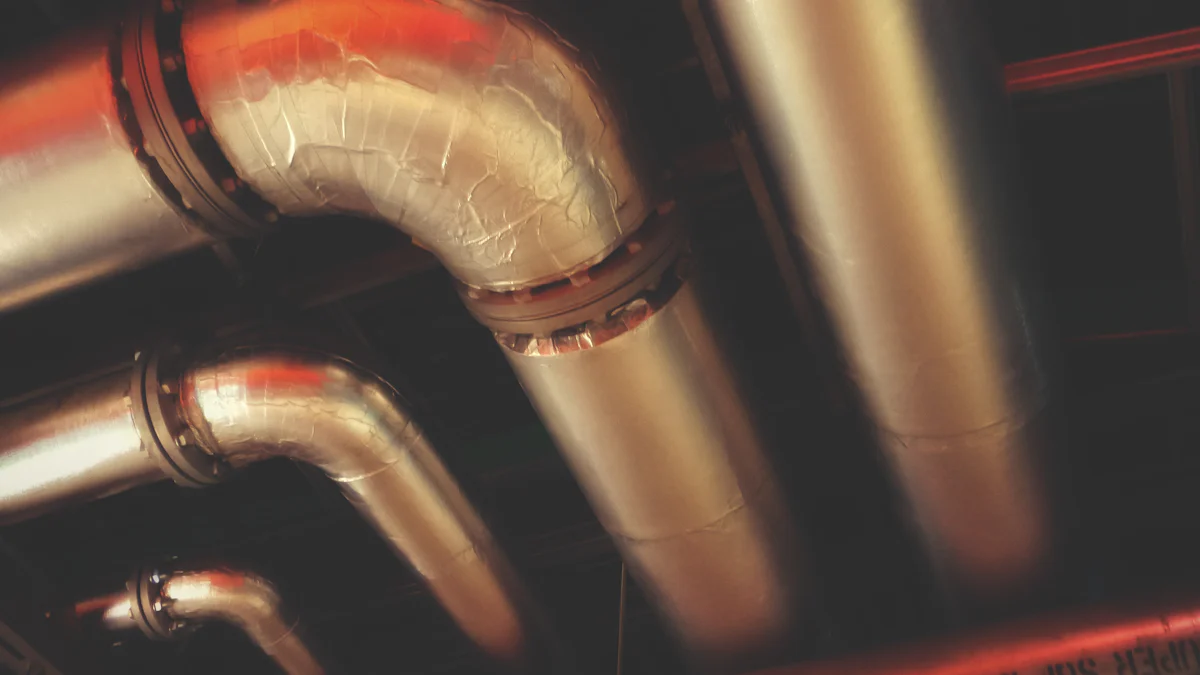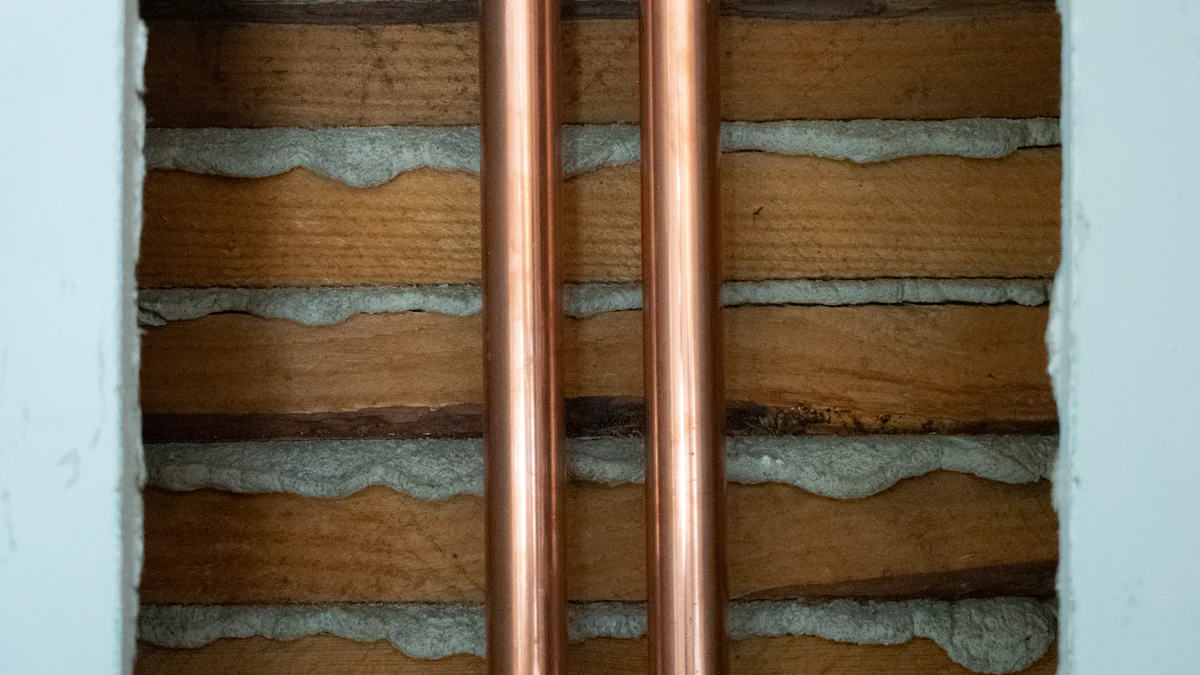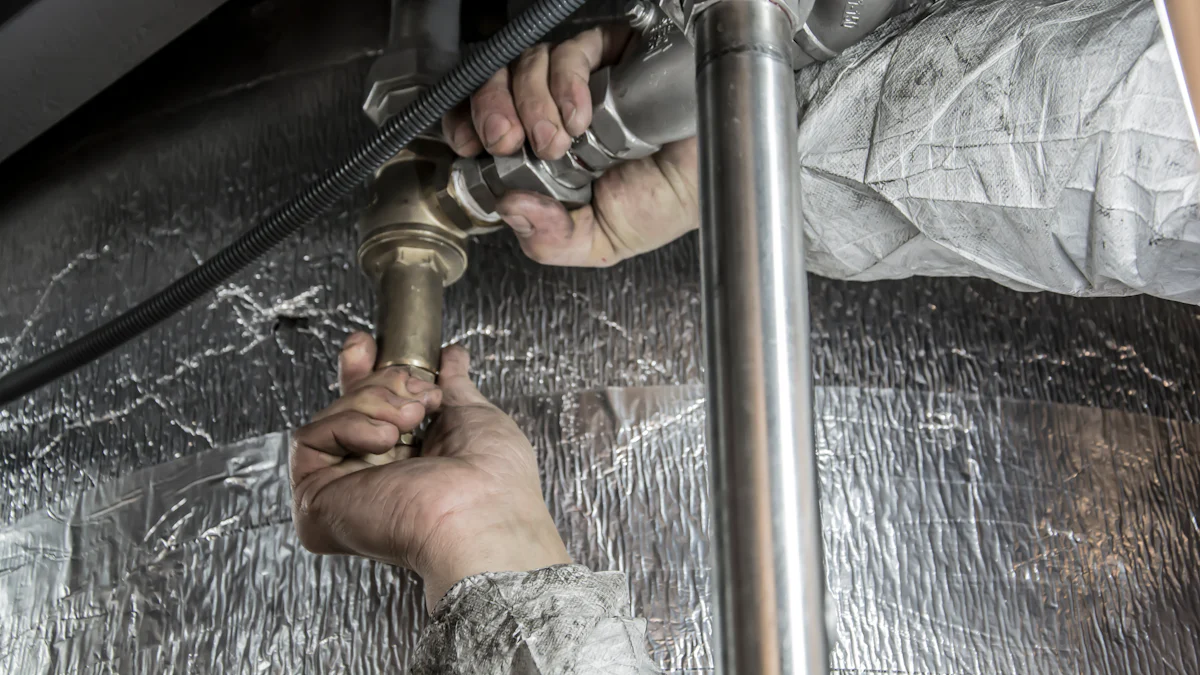Master the Art of Copper Pipe Insulation with This Guide

Insulating copper pipes is a crucial step in maintaining your home's energy efficiency and preventing costly damage. Proper insulation not only saves you money but also contributes to environmental conservation by reducing energy consumption. In this guide on how to insulate air conditioner copper pipe, we will walk you through the essential steps of insulating your copper pipes effectively. By following these instructions, you can enhance the performance of your HVAC system and ensure long-term durability for your pipes.
Preparing for Insulation

Identify the Correct Pipe
When insulating your copper pipes, it is crucial to correctly identify the pipe that needs insulation. Look for the main copper line that connects to your air conditioner unit. This larger pipe is responsible for carrying the refrigerant and is the primary source of cooling in your system. Avoid insulating the smaller line, known as the liquid line, as it needs to release heat to function effectively.
Measure and Purchase Materials
Before starting the insulation process, measure the length and thickness of the copper pipe accurately. This step ensures you purchase the right size of insulation material for a snug fit. Consider various insulation options such as Mineral Wool Insulation or Aerogel Insulation based on your specific needs. Mineral Wool provides excellent thermal and acoustic insulation, while Aerogel offers superior thermal properties suitable for specialized HVAC applications.
Turn Off the Air Conditioner
Prior to insulating, ensure you turn off your air conditioner for safety reasons. This precaution prevents any accidental activation of the system while you work on insulating the copper pipes. Safety should always be a top priority when handling HVAC components to avoid any potential risks or injuries.
Insulating the Copper Pipe

Remove Old Insulation
When it comes to copper pipe insulation, one of the initial steps is removing the old insulation. Start by carefully peeling off the existing insulation material, ensuring not to damage the copper pipe underneath. Use a utility knife to cut through any stubborn sections and gently pull off the insulation. Once removed, take a damp cloth and mild soap to clean the pipe's surface thoroughly. This cleaning step helps in ensuring proper adhesion of the new insulation and prevents any debris from affecting its effectiveness.
Cut and Wrap New Insulation
After clearing the old insulation, it's time to prepare for wrapping the new copper pipe insulation. Begin by measuring the length of the pipe accurately and cutting the new insulation material to size using sharp scissors or a utility knife. Ensure that there are no gaps or overlaps in the insulation to maintain its efficiency. Next, wrap the foam or rubber insulation snugly around the copper pipe, starting from one end and moving towards the other. Secure it in place using zip ties or electrical tape for added stability.
Secure the Insulation
To complete your copper pipe insulation project, focus on securing the newly wrapped material effectively. Peel off any protective tape covering adhesive strips on the insulation to expose them fully. Press firmly along the seams where each layer meets to ensure proper adhesion and prevent air leakage. For additional security, consider using duct tape along the length of the wrapped area, especially if you notice any loose sections or gaps. This extra layer helps in keeping the insulation intact and enhances its longevity.
Final Tips and Safety
Use Solar-Rated Insulation
When considering insulating your copper pipes, opting for solar-rated insulation can offer significant benefits, especially in varying pipe sizes. Scientific research has shown that utilizing transparent honeycomb insulation with specific densities and thicknesses can enhance energy efficiency. For instance, a study published in the journal Energies in 2020 analyzed different variants of insulation thickness (68, 88, 108, and 128 mm) to determine the most effective option for improved thermal performance.
Regular Maintenance
Ensuring the longevity and optimal functioning of your HVAC system involves regular checks and maintenance routines. Periodic inspections help in identifying any potential issues early on, preventing costly repairs or replacements. During these maintenance sessions, focus on checking for air leaks, signs of wear or tear on the insulation material, and any unusual noises coming from the pipes. By staying proactive with maintenance tasks, you can prolong the lifespan of your copper pipes and maintain a high level of energy efficiency throughout your home.
In conclusion, mastering the art of copper pipe insulation is a vital step in ensuring the efficiency and longevity of your HVAC system. By correctly identifying the pipes, measuring accurately, and using the right materials, you can significantly enhance energy conservation and prevent unnecessary damage. The benefits of proper insulation extend beyond cost savings to include environmental preservation and improved system performance. Remember to conduct regular maintenance checks to uphold the effectiveness of your insulation. As User from Fine Home Building Forum highlights, insulating hot water pipes can lead to reduced water usage and quicker access to hot water, emphasizing the overall value of insulating your pipes for long-term benefits. Take charge of your home's energy efficiency today by following this comprehensive guide!
See Also
Exploring Drone Infrared Thermal Camera: A Complete Tutorial
Perfecting Drone Surveillance Using Thermal Imaging Camera: A Detailed Manual
Becoming Proficient in DroneThermal v4 Micro UAV Thermal Camera: An In-Depth Tutorial
Understanding the Latest in Drone Technology: A Complete Guide to Choosing Top Drones
Mastering ISUN Thermal Camera for Drone Surveillance: A Comprehensive Manual
Contact Us: Ms. Coco Huang
E-mail: sales@iasun.cn
WhatsApp/Wechat: +86 13510421923

